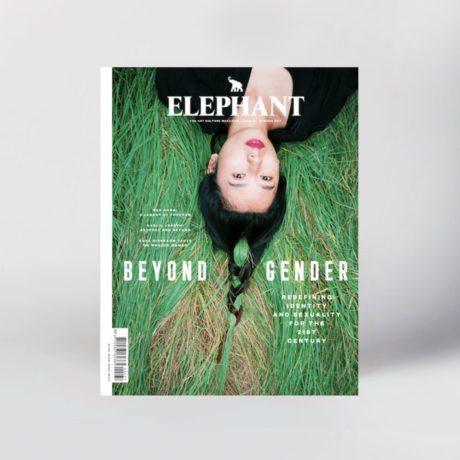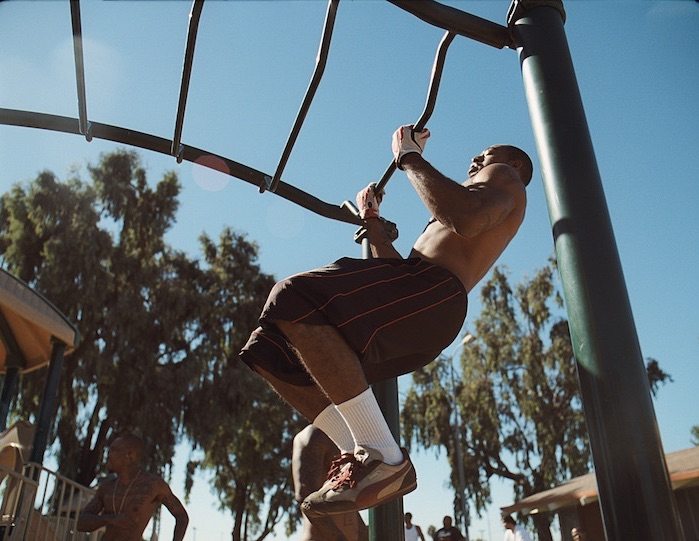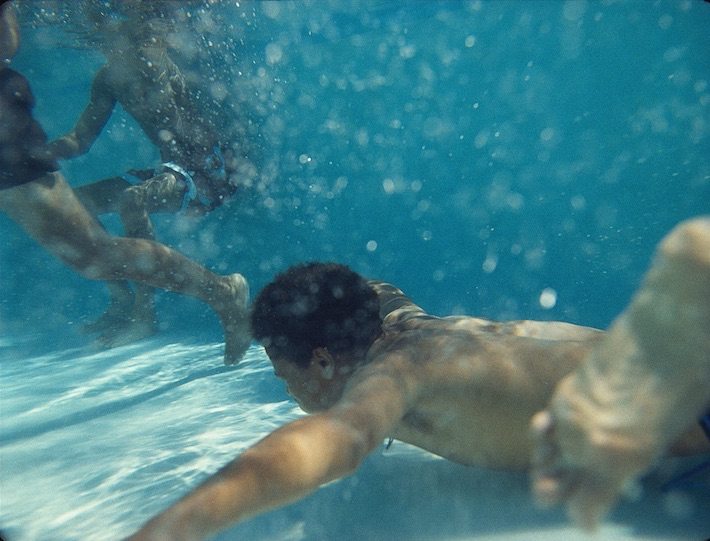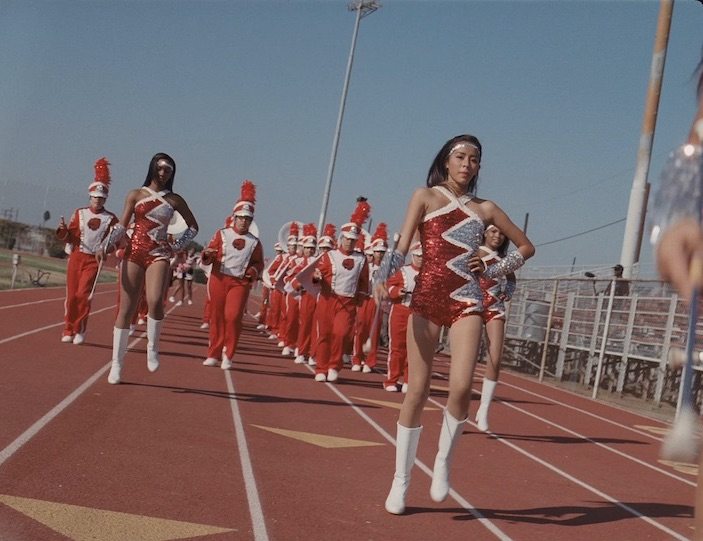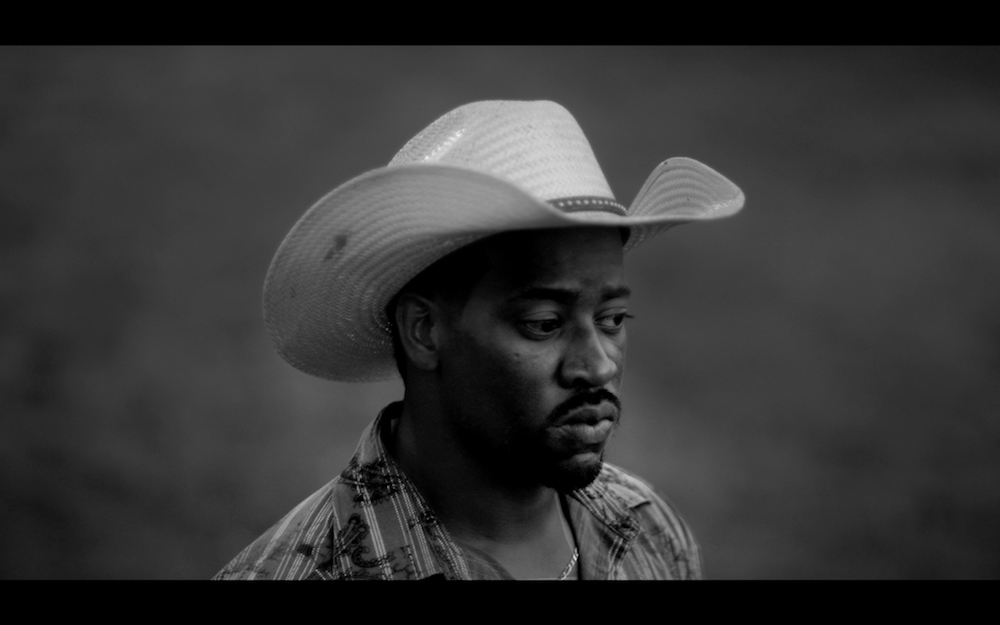
Motion picture still
“It’s the equivalent of asking you when you realized you were a girl. Or asking Stanley Kubrick how early he came into contact with white identity. I can’t imagine you telling him that ‘white consciousness is a recurrent theme in his work’ (and it very much is). I understand how you would feel like it’s a thoughtful question in such a racist world; and I appreciate that—but what individual is not conscious of their race as soon as they’re born, just like one’s gender? It’s low-key degrading and I wish people would stop calling attention to how Kerry James Marshall is a great black painter… as opposed to one of the best living painters alive, period. No one called Lucian Freud a great white painter. The question itself implies low-threshold thinking and a certain alienness around blackness and black people that frankly I think only reinforces and perpetuates the very thing you’re trying to transcend.”
This is not going well. After three months trying to pin down the elusive LA-based director Kahlil Joseph, I finally send my questions over by email. I ask: “Black consciousness is, of course, a recurrent theme in your work. How did you come into contact with the history of black identity?” What I don’t know—until afterwards—is that he’s sick of being asked questions about blackness. Yet black history is very much present in his work, not as a separate, shut-off thing of the past, but as part of the present moment. Notably, author and civil-rights activist W.E.B. Dubois’s idea of “double consciousness”, a description of the psychological conflict experienced by African-Americans, has been proposed as an influence for the split-screen m.A.A.d and appears to have informed the title of the exhibition when it was shown at MOCA: Double Conscience.
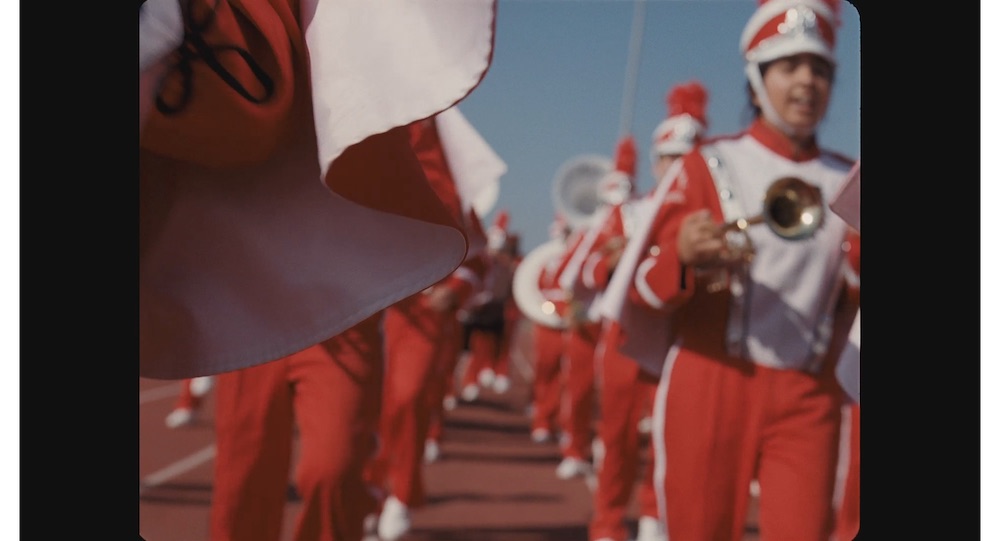
Motion picture still
Perhaps the question was insensitively phrased. Race is such a vast, complicated topic, especially now, especially in the US. When we write to one another, it’s only a week after Trump’s election. But race is certainly not something I have ever taken for granted. I grew up with a Sri Lankan immigrant father who didn’t identify with the white culture of Britain as a youth. I had no history handed down to me, and at school Sri Lanka was never mentioned. I’ve always envied people who have a strong sense of their history and culture.
“Honestly, it never occurred to me that I have a voice in ‘American culture’.”
Of course, Joseph doesn’t know this. And I don’t know him, except through his work. When you watch his films, made up of so many stories, real and imagined, personal and public, forgotten and remembered, your own stories intertwine with his: for example, Wildcat (2013), the seven-minute film Joseph shot at the rodeo in Grayson, Oklahoma, formerly known as Wildcat, and that brought attention to the historic town founded by African-Americans at the turn of the twentieth century and its little-known rodeo; Joseph’s Aunt Janet was one of the rodeo’s founders. So the way he weaves together the threads of black history, whether consciously or not, seems a natural talking point.
- m.A.A.d, 2014
Motion picture stills
Joseph rarely gives interviews—his films aren’t didactic, they’re dreamlike, made up of metaphors, and explaining them would surely destroy their magic; this is why they’ve been called “sacral”, and even “spiritual”; they feel as unconscious as a heartbeat—and keeps a low profile, difficult for someone who has worked with such stratospherically famous artists as Beyoncé (he is one of the seven directors behind her Grammy-winning visual album Lemonade), Kendrick Lamar and Flying Lotus. I wonder if having a voice in American culture brings a certain pressure. “I’m still surprised when people know about my work,” he responds. “Honestly, it never occurred to me that I have a voice in ‘American culture’; I’ve been making things quietly in LA for a couple years now, but more than that, I’d really like to start to making films and maybe some more art—and if I’m lucky, people will like the work I want to make.”
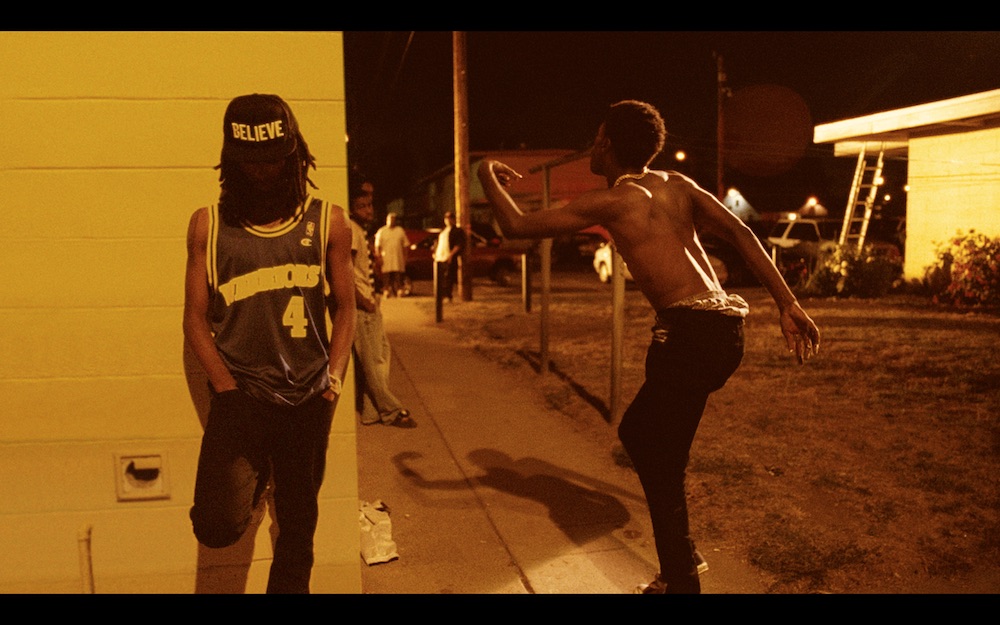
Motion picture stills
And people do like the work he’s made so far. Ralph Rugoff, curator of the exhibition The Infinite Mix in London, where Joseph’s m.A.A.d. appeared for the first time in the UK at the end of 2016, says: “I chose Kahlil’s work because it was an outstanding work of art that perfectly dovetailed with the territory that the exhibition explored. The audiences to The Infinite Mix loved this work—I’d have to say it was one of the popular favourites. Like all great works, it doesn’t require any specialized knowledge of contemporary art to appreciate. It is adventurous and experimental and at the same time seriously entertaining and moving.”
The film was made in response to Kendrick Lamar’s 2012 album Good Kid, m.A.A.d City. It’s made up of fragments of found footage—home videos shot by Lamar’s uncle in 1992—alongside cut-up news footage of police brutality and material shot by Joseph in Compton and Los Angeles. It’s an emotional, continually surprising 360-degree portrait that plunges you under water and pulls you up into the sky, Joseph’s rhythmic editing carving new meaning and nuance out of Lamar’s poetry. Joseph’s sensibility for music is as clear as his mastery of the moving image.
- m.A.A.d, 2014
Motion picture stills
Of his process, Joseph writes: “Over time I noticed that from the beginning I’ve quietly yearned for a traditional approach to making work, but when I’m finished with a project and I look back on how I got somewhere, it’s like I was able to crystallize or manifest a kind of non-verbal frequency that I can never completely articulate beforehand with words, or even with images.”
“I chose Kahlil’s work because it was an outstanding work of art that perfectly dovetailed with the territory that the exhibition explored.”
Joseph is happier, it seems, to talk about other artists, like his friend the artist Henry Taylor, with whom he recently collaborated for Taylor’s exhibition at Blum & Poe in Los Angeles. “I met HT six to seven years ago through my brother and he’s one of the most amazing people I know—he’s an incredibly special artist and I know he will be one of the artists people talk about in fifty years from now… Since my brother died we’ve become a lot closer. Earlier this summer we both ended up in Greece at the same time. We met up in Athens and had a lot of fun visiting the ancient ruins and going to see a lot of local and international art. Late one night (2am I think) we were watching soccer at an outdoor bar and amongst other things he started telling me about his show and what he wanted to do. I remember mentioning some ideas in passing that would be cool to see in a white-wall gallery based on stories he’s told me… and that was it—I forgot about it. A month later back in LA he called me and said ‘I can’t get that shit out of my mind since you said it’… I had never really done anything in a big-time gallery and when he said it, the thought of collaborating with HT was super-fresh and original to me…
“Henry took me to his gallery and we ended up talking to [the gallerist Jeff Poe], told him the idea and a couple days later it was happening full throttle… The opening was two weeks later and it was one of the most electrifying experiences I’ve ever had in a gallery space.”
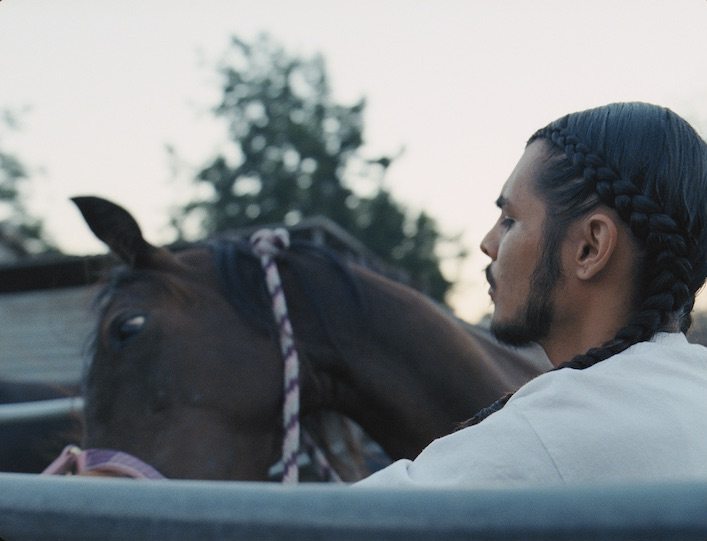
Motion picture still
He’s open to talking about his brother, Noah Davis, who passed away in 2015, aged only thirty-two. Davis was an exceptional artist who had also moved to Los Angeles from Seattle, and his legacy continues in the Underground Museum, a nonprofit gallery he founded with his wife, Karon, in Arlington Heights. Joseph and his wife, film producer Onye Anyanwu, help run the gallery alongside Karon. It continues to play an important role for Los Angeles’s artists and thinkers—a community that Joseph says has “a very real presence” for him and that includes young artists like Henry Taylor, Martine Syms and Deana Lawson, as well as MOCA’s chief curator, Helen Molesworth, artist Arthur Jafa and academic Fred Moten.
It was at the Underground Museum that m.A.A.d first appeared in 2014, at a group exhibition called The Oracle. Of Davis, Joseph says: “He saw through all the bullshit so easily, it’s profoundly inspiring on a personal/spiritual level and on a creative level. Knowing him as closely as I, and a handful of others, did was a priceless gift. We had the best artist of our generation around us all the time, breaking it all down for us in plain speak.”
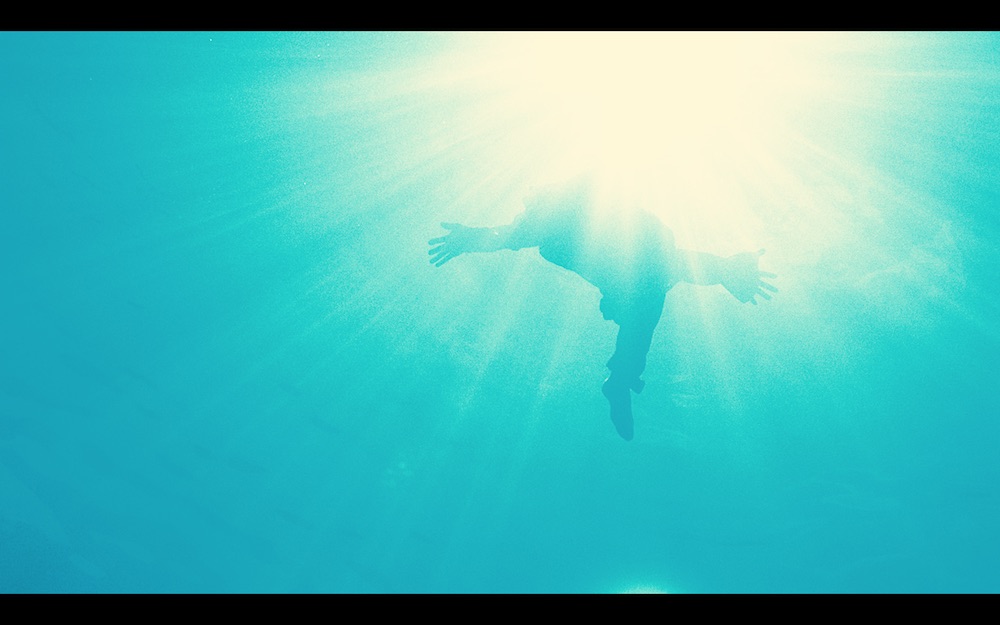
Motion picture still
In 2016, Joseph showed the film he says means the most to him, Alice™ (You Don’t Have to Think About It), an intensely emotive piece shot at a recording session of the singer Alice Smith (who also appears in Memory Palace, Joseph’s collaboration with Martine Syms). It was presented in an exhibition with his late brother at the Frye Art Museum in Seattle, where they grew up. The exhibition revealed the influence they each had on the other’s practice: Davis paints Joseph, his brush acting like a lens, while Joseph films his brother in a documentary split across four screens that shows a thoroughly painterly understanding of light and shadow.
“I’m interested in energy,” Joseph suggests. His work displays a radiant energy, alive with flashes of light that sometimes interrupt the frame or act as pivots for scenes. It’s an energy that’s unstable, constantly transforming, but eternal.
“I think there’s a large component and responsibility of being an artist that is made up of the light.”
It’s also, perhaps, what attracts him to the work of Andrei Tarkovsky. The metaphysical Soviet filmmaker’s work, with its long, panning camera movements, clearly resonates with Joseph, who prefers to complicate his visual narrative by using two-, three- and four-screen displays, across which images are continually juxtaposed, sometimes meeting and merging. Characters might appear in one screen and then re-emerge on another.
There’s a Tarkovskian quality about the way Joseph places people in expansive environments too—as he does in The Mirror between Us (2012), the first screenplay Joseph wrote, based loosely on a poem of the same title by the thirteenth-century Persian scholar and Sufi mystic Rumi.
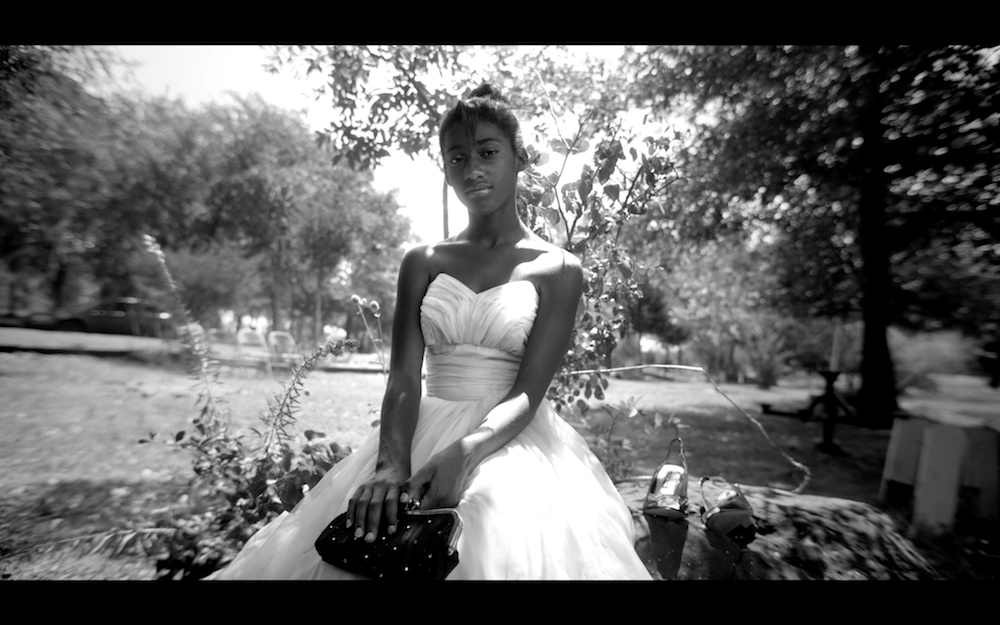
Motion picture still
Joseph’s films never follow conventional time. How does he achieve this blurring of past and present, fiction and reality? “That’s a difficult question to answer without thinking about things too much,” Joseph replies. “I mean, the imagination is more real to me than the perception of reality, or the acceptance of reality—from the perspective of quantum physics the past, present and future are all happening simultaneously; I’m from Seattle, which might explain some preference for a moodier palette—but I also love comedy and drama so… I don’t know.”
Like his films, this interview leaves me with a lingering feeling of melancholy, like the uneasy feeling you can’t shake off after a strange dream. As Tarkovsky once said, when faced with art, audiences experience a discordant feeling accounted for by “the friction between their souls and the outside world… Let them be helpless like children, because weakness is a great thing, and strength is nothing.”
Joseph gives us all of life at once, the mysterious chain of being born, loving, celebrating, dying, grieving. It’s universal, and that is kind of reassuring. Is he an optimist? “Yes—I think there’s a large component and responsibility of being an artist that is made up of the light.”
All images courtesy Kahlil Joseph
This feature originally appeared in issue 31
BUY ISSUE 31